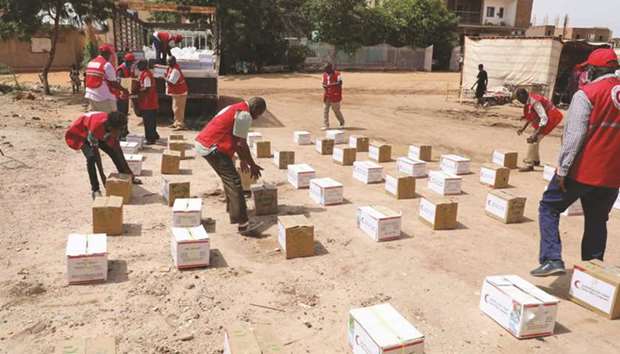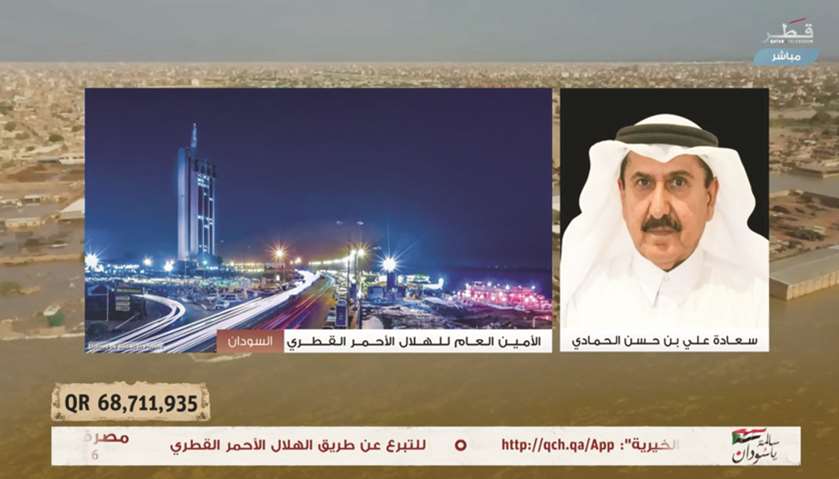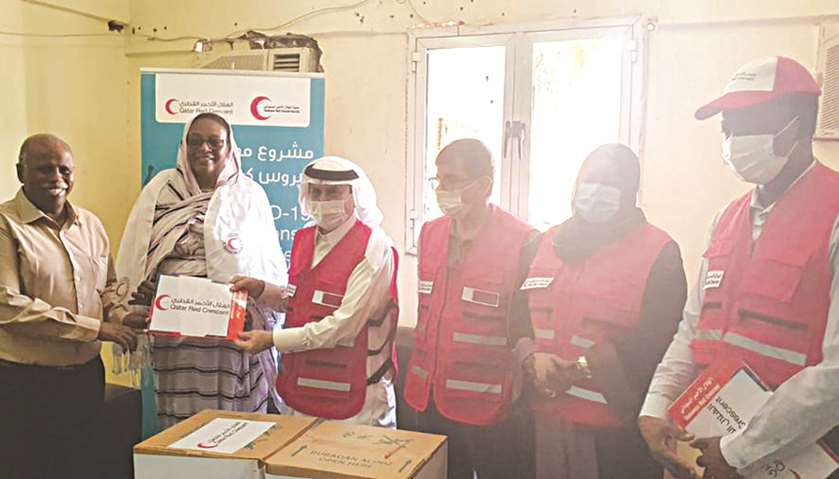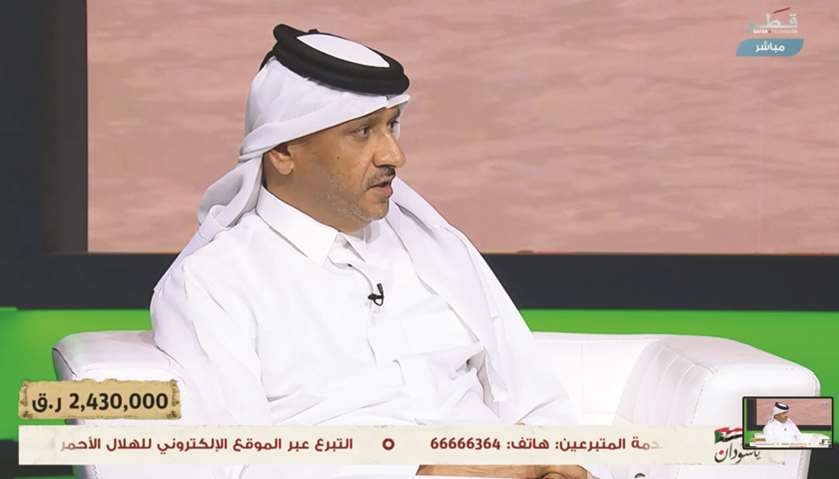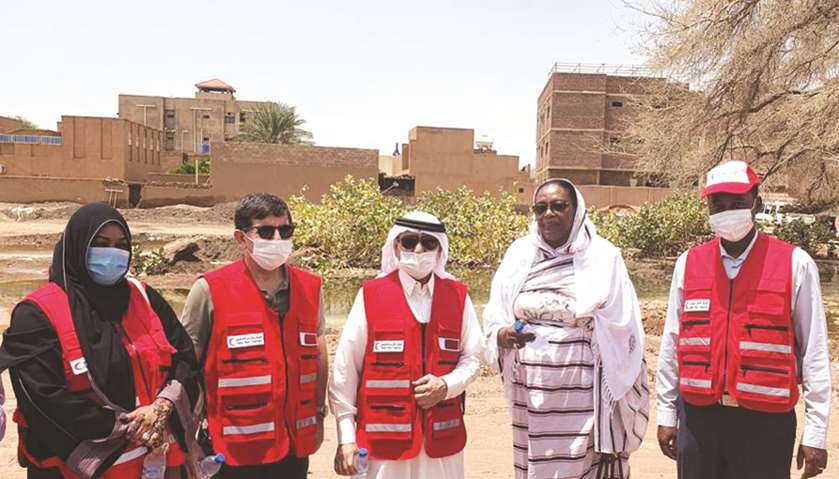The Qatar Red Crescent Society (QRCS) has intensified efforts, under the 'Peace for Sudan' campaign, to help the people of Sudan in the aftermath of recent flash floods.
The campaign was launched by the Regulatory Authority for Charitable Activities (Raca) and co-implemented by QRCS and Qatar Charity (QC).
In the presence of QRCS chief executive director Ibrahim Abdullah al-Maliki, a live fundraising campaign was broadcast on all media channels, supervised by Qatar Media Corporation (QMC).
Individual and institutional donors in Qatar have so far donated QR89.67mn.
One can still donate online (http://bit.ly/Sudan-Campaign), call the donor service number (66666364) or text via WhatsApp (66644822).
In his statements, al-Maliki said, “QRCS deployed 25 tonnes of medical aid, to be distributed to health centres and hospitals. Health facilities are the worst affected by the disaster. Together with the Turkish Red Crescent, the aid cargoes were delivered to Sudan."
QRCS acted immediately by activating its Disaster Information Management Centre. Its representation mission in Sudan took part in distributing food aid with the Sudanese Red Crescent Society (SRCS).
“We adopt an integrated methodology that covers the urgent relief needs, such as supporting ambulance and health facilities, distributing food baskets to the affected families and repairing homes,” said al-Maliki. “At the same time, we consider recovery and capacity-building, through risk reduction programmes, sustainable livelihood interventions and first aid and emergency awareness."
He thanked the organisations that contributed to the campaign, including Raca, QC, QMC, Qatar TV, Al-Rayyan TV, Qatar Radio, Qur'an Radio and Sout Al-Khaleej Radio.
Ali bin Hassan al-Hammadi, secretary-general of QRCS, in an interview from Khartoum, spoke about the organisation's emergency response to the flooding. According to him, QRCS is at the forefront, providing medical aid to control the Covid-19 outbreak, in partnership with Turkish and Sudanese peers.
“It is necessary to stand together in the face of this tragic situation,” he said. “There are concerns of possible epidemics due to this crisis, the first of its kind in 100 years. We joined hands with SRCS and Sudan’s Ministry of Health to assess the needs. We share the same goal of helping the people of Sudan. I would like to thank Qatar Fund for Development (QFFD) for supporting the emergency intervention programme. We will continue to pursue our joint humanitarian operations."
QRCS’s field personnel in Sudan began distributing food aid and hygiene kits to the most affected families in Khartoum State, with funding from QFFD. So far, 2,000 families have received food baskets, with plans to reach out to 20,000 families over the coming days.
Headed by al-Hammadi, QRCS’s delegation in Sudan took a field tour of Tuti Island and other affected areas in northern Khartoum. They were accompanied by Dr Afaf Ahmed Yahya, secretary-general of SRCS.
Later, the delegation handed over medical aid to Ibrahim Malik University Hospital. More medical deliveries are set to be made to enable health facilities to combat the virus, which has been worsened by the floods and subsequent pressure on the healthcare system.
In addition to al-Hammadi, QRCS’s delegation comprised Dr Fawzi Oussedik, head of International Relations and International Humanitarian Law, and Nagla al-Hajj, head of International Development.
Currently, QRCS is working on a large-scale intervention scheme to help the flood victims, focusing on the food security, emergency shelter, water and sanitation, and risk reduction sectors. It is intended to help 120,000 beneficiaries in the states of Khartoum, Sennar, Blue Nile, White Nile, Northern, Gezira, River Nile and Red Sea.
The QR12mn scheme is co-implemented by QRCS and SRCS. It involves a quick assessment to identify the needs and beneficiaries, food baskets (vegetable oil, lentils, infant formulas, biscuits, and sugar) for 20,000 families, shelter and non-food items (tarpaulins, blankets, mosquito nets, jerrycans, mattresses, and kitchenware) for 10,000 families, 300 makeshift tents for homeless families, restoration of 100 public buildings, rehabilitation of shops and livelihood assets damaged by the flooding, drainage of stagnant water, spray of pesticide, drinking water purification, construction of 500 toilets, and building of 45 sand dams to hold water out of residential areas.

